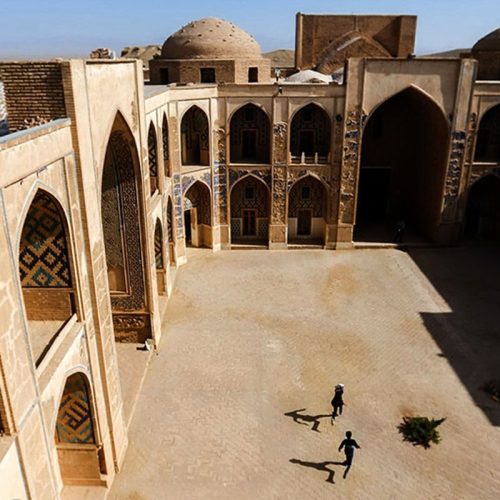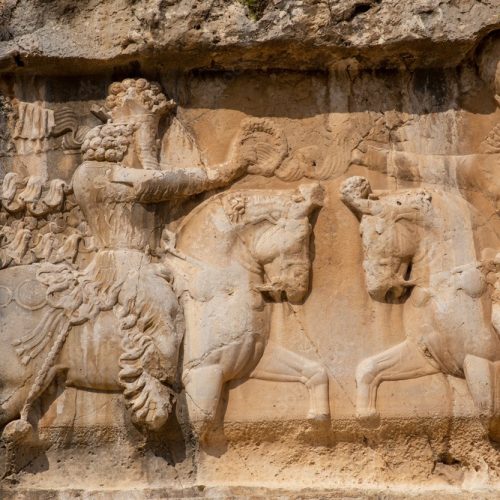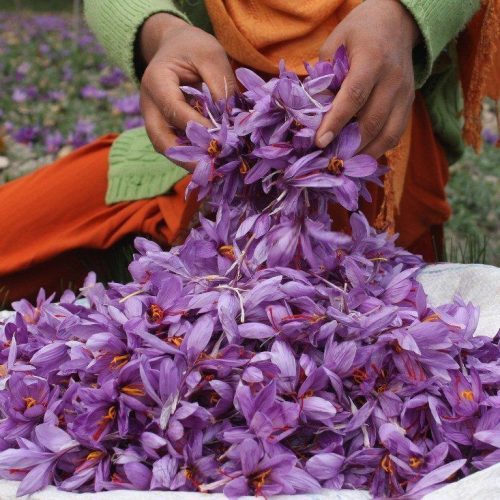The Gilaks, an indigenous ethnic group residing in the northern regions of Iran, primarily in the province of Gilan, represent a unique and vibrant facet of Iranian culture. Known for their distinct language, customs, and traditions, the Gilaks have played a significant role in the cultural and historical tapestry of Iran. This article delves into various aspects of Gilak life, from their rich history and culture to their economic practices and genetic heritage. By exploring these dimensions, we aim to provide a comprehensive understanding of the Gilaks and highlight their importance within Iranian sociology and anthropology.
History
The history of the Gilaks is deeply rooted in the ancient past, with their origins tracing back to early human settlements in the Caspian region. The fertile lands of Gilan, coupled with its strategic location along the Caspian Sea, made it an attractive area for early settlers. Archaeological evidence suggests that the region has been inhabited since the Neolithic period, with significant developments occurring during the Iron Age.
Early Settlements and Origins
The origins of the Gilaks are intertwined with the broader history of the Caspian Sea region. Archaeological findings indicate that human habitation in Gilan dates back to the Neolithic period (approximately 10,000 to 4,500 BCE). These early settlers were primarily engaged in hunting, fishing, and rudimentary agriculture, benefiting from the region’s rich natural resources. The abundance of water and fertile soil supported the growth of early agrarian communities, which laid the foundation for the development of more complex societies.
The transition from nomadic to settled life marked a significant turning point in the history of the Gilaks. The development of agriculture allowed for the establishment of permanent settlements, leading to the rise of early villages and towns. These early communities were likely organized around clan or tribal structures, with social hierarchies based on kinship and agricultural productivity.
Historical Influences and Events
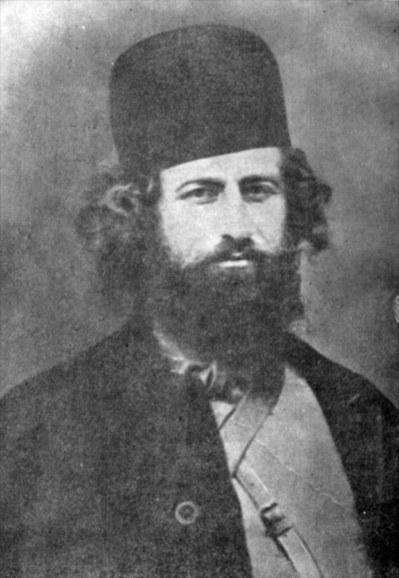
Throughout history, the Gilaks have experienced various cultural and political influences. The region was known to the ancient Greeks and Romans, who referred to the inhabitants as “Cadusians.” These early mentions highlight the strategic importance of the region, which served as a crossroads for various civilizations. The Caspian Sea facilitated trade and cultural exchanges, bringing influences from the broader ancient world to Gilan.
The arrival of the Median and Achaemenid Empires in the first millennium BCE brought significant changes to the region. Gilan became part of the vast Achaemenid Empire under Cyrus the Great. The integration into this powerful empire led to administrative and cultural changes, including the introduction of Zoroastrianism, which left a lasting impact on the region’s religious landscape.
Resistance to Islamic Conquest
During the Islamic conquest of Persia in the 7th century CE, the Gilaks, along with other Caspian peoples, resisted the Arab invaders for an extended period. The rugged terrain of Gilan, characterized by dense forests and mountainous regions, provided natural defenses that hindered the progress of the Arab armies. The Gilaks’ resistance is well-documented in historical records, highlighting their determination to maintain their autonomy and unique cultural identity.
Despite their initial resistance, the Gilaks eventually adopted Islam, although they retained many of their pre-Islamic customs and traditions. This period of resistance and eventual integration into the Islamic world helped to the development of a distinct Gilaki identity, characterized by a blend of indigenous traditions and Islamic influences.
Medieval Period and the Silk Road
In the medieval period, Gilan became an important center for trade and commerce, benefiting from its proximity to the Silk Road. The Silk Road, a network of trade routes connecting the East and West, facilitated the exchange of goods, ideas, and cultures. Gilan’s strategic location made it a key point for merchants and travelers, contributing to the region’s economic and cultural prosperity.
The medieval period also saw the rise of local dynasties and rulers who played significant roles in the region’s history. One notable figure was Mirza Ali Kiya, who founded the Kiya dynasty in the 14th century. His rule marked a period of relative stability and prosperity for Gilan, with the establishment of strong local governance and the promotion of trade and agriculture.
Safavid Era and Beyond
The Safavid era (1501-1736) was a crucial period in the history of Gilan. The Safavid rulers, particularly Shah Abbas I, recognized the strategic importance of Gilan and sought to strengthen their control over the region. Shah Abbas implemented various administrative reforms, including the integration of Gilan into the Safavid administrative structure. This period saw the introduction of new agricultural techniques and crops, such as the cultivation of silk, which became a major economic driver for the region.
The 18th and 19th centuries brought new challenges and opportunities for the Gilaks. The region faced external pressures from the expanding Russian Empire, leading to significant geopolitical changes. The Treaty of Gulistan in 1813 and the Treaty of Turkmenchay in 1828 resulted in territorial concessions to Russia, altering the political landscape of the Caspian region. Despite these challenges, Gilan continued to be a center of cultural and economic activity.
Modern History and Integration
Modern history has seen Gilan, and consequently the Gilaks, integrated into the broader Iranian state. The region played a notable role during the Constitutional Revolution of the early 20th century, with Gilak leaders contributing to the movement for democratic reforms. The Constitutional Revolution, which sought to establish a parliamentary system and limit the powers of the monarchy, resonated with many Gilaks who had a history of local governance and autonomy.
The Pahlavi era (1925-1979) brought significant modernization efforts to Gilan, including the development of infrastructure, education, and industry. The construction of roads, railways, and modern ports facilitated economic growth and integration with the rest of Iran. However, these changes also brought challenges, including the disruption of traditional lifestyles and economic activities.
The post-revolutionary period has seen continued efforts to balance modernization with the preservation of Gilak cultural identity. Gilan remains a vital part of Iran, contributing to the country’s cultural diversity and economic development. The region’s unique history, characterized by resilience and adaptability, continues to shape the identity and future of the Gilak people.
Culture
Gilak culture is a rich tapestry woven from ancient traditions, vibrant customs, and artistic expressions. The Gilaks are known for their strong sense of community and their deep connection to their land and environment. This cultural heritage is expressed in their traditional customs, festivals, arts, music, and dance.
Traditional Customs and Practices
Traditional customs and practices form the backbone of Gilak culture. Agriculture has long been the cornerstone of Gilak life, with rice and tea cultivation being particularly significant. The region’s humid climate and fertile soil create ideal conditions for these crops. Rice paddies, with their intricate irrigation systems, are a common sight in Gilan, reflecting centuries of agricultural expertise. Tea cultivation, introduced in the late 19th century, has also become a vital part of the local economy and culture, with Gilan producing some of Iran’s finest teas.
Fishing is another traditional practice, given the proximity to the Caspian Sea. The Gilaks have developed various fishing techniques suited to the region’s waters, contributing to both their diet and economy. Fishing is often a communal activity, reinforcing social bonds and providing a means of subsistence.
Handicrafts are an essential aspect of Gilak culture, with local artisans producing a range of goods such as carpets, pottery, and textiles. These crafts are often made using traditional methods passed down through generations, showcasing the region’s artistic heritage. The intricate patterns and designs of Gilaki carpets, for example, reflect the natural beauty and cultural motifs of the region.
Festivals and Celebrations
Festivals and celebrations are integral to Gilak’s cultural life. One of the most significant is “Norooz,” the Persian New Year, which is celebrated with particular enthusiasm in Gilan. Norooz, which marks the arrival of spring, involves various rituals and traditions, including house cleaning, visiting relatives, and preparing special foods. The Gilaks celebrate Norooz with unique local customs, such as the “Norooz Khani,” where groups of singers go from house to house, singing traditional songs and spreading festive cheer.
Another important festival is “Mehregan,” an ancient festival dedicated to the Zoroastrian deity Mithra, which celebrates friendship, love, and nature. During Mehregan, the Gilaks gather to share meals, perform traditional dances, and offer thanks for the harvest. This festival, though less widely celebrated than Norooz, remains an important cultural event for many Gilaks.
The “Tirgan” festival, held in midsummer, is another notable celebration. Tirgan is associated with water and rain, reflecting the importance of these elements in agricultural societies. During Tirgan, Gilaks engage in water-related rituals, including splashing water on each other, symbolizing purification and renewal. Traditional foods, music, and dances are also integral parts of the Tirgan celebrations.
Art, Music, and Dance
Art, music, and dance are vital expressions of Gilak culture. Traditional Gilak music is characterized by its use of instruments like the “Kamancheh” (a type of fiddle), “Dayereh” (a frame drum), and “Ney” (a reed flute). The melodies often reflect the natural rhythms and landscapes of Gilan, evoking the beauty of the region’s forests, mountains, and coastline. Music is an essential part of social gatherings, festivals, and rituals, bringing people together and reinforcing community bonds.
Folk songs, known as “Gilaki Maqam,” are an important part of Gilak musical heritage. These songs often tell stories of love, nature, and daily life, passed down orally through generations. The lyrics and melodies of Gilaki folk songs are deeply rooted in the region’s cultural and natural environment, reflecting the values and experiences of the Gilak people.
Dance is another important cultural expression. Traditional dances, such as the “Raghse Gilaki,” are performed during festivals and social gatherings. These dances are characterized by their lively movements and rhythmic steps, often accompanied by music played on traditional instruments. The dances are usually performed in groups, highlighting the importance of community and collective celebration in Gilak culture.
Visual arts, including painting, pottery, and textile weaving, also play a significant role in Gilak culture. Local artisans create intricate designs that often feature motifs inspired by nature, such as flowers, animals, and geometric patterns. These artworks are not only decorative but also serve as cultural symbols, representing the identity and heritage of the Gilak people.
Clothing and Traditional Attire
Traditional attire is an important aspect of Gilak culture, reflecting the region’s climate, lifestyle, and social customs. Gilak clothing is often made from locally produced materials, such as cotton and wool, and features distinctive designs and patterns.
For men, traditional attire typically includes a long tunic, known as “Chokha,” paired with trousers and a felt hat called “Kolah.” The Chokha is often adorned with decorative elements, such as embroidery or woven patterns, reflecting the wearer’s social status and regional identity.
Women’s traditional attire includes a long dress, called “Shaliteh,” worn over a blouse and trousers. The Shaliteh is often brightly colored and decorated with intricate embroidery, lace, and beadwork. Women also wear a headscarf, known as “Charghad,” which is an essential part of their traditional dress. The Charghad can vary in style and design, with some featuring elaborate patterns and others being more plain and functional.
Cuisine and Culinary Traditions
Gilak cuisine is renowned for its diversity and rich flavors, heavily influenced by the region’s agricultural abundance and coastal resources. The use of fresh herbs, vegetables, and seafood is a hallmark of Gilak cooking, resulting in dishes that are both nutritious and flavorful.
Some iconic Gilak dishes include:
- Baghala Ghatogh: A savory stew made with fava beans, dill, garlic, and eggs, often served with rice.
- Mirza Ghasemi: A smoked eggplant dish mixed with tomatoes, garlic, and eggs, typically enjoyed with flatbread or rice.
- Torshi Tareh: A tangy herb stew made with a variety of local greens, garlic, and eggs, flavored with lemon juice or vinegar.
- Fesenjan: A rich and flavorful stew made with ground walnuts and pomegranate paste, often cooked with chicken or duck.
Seafood is also a staple of Gilak cuisine, with dishes such as grilled fish, fish roe kebabs, and shrimp pilaf being popular choices. The use of aromatic herbs, spices, and citrus fruits enhances the flavors of these dishes, creating a unique culinary experience.
Folklore and Oral Traditions
Folklore and oral traditions are vital components of Gilak culture, preserving the region’s history, beliefs, and values. Storytelling is a cherished practice, with tales passed down through generations, often recounting historical events, mythical creatures, and moral lessons.
One popular folklore figure in Gilak culture is “Amoo Norooz,” a character associated with the Norooz celebrations. Amoo Norooz is believed to bring joy and prosperity, symbolizing the renewal of life with the arrival of spring. Stories about Amoo Norooz are often shared during Norooz festivities, adding a sense of magic and wonder to the celebrations.
Proverbs and sayings are also an important aspect of Gilak oral traditions, encapsulating the wisdom and experiences of the community. These proverbs are often used in daily conversations, providing guidance and reinforcing cultural values.
Religion and Spiritual Practices
Religion plays a significant role in Gilak culture, with the majority of Gilaks adhering to Shia Islam. Religious practices and rituals are deeply integrated into daily life, with mosques and religious centers serving as important community hubs.
In addition to Islamic practices, elements of pre-Islamic beliefs and customs have persisted in Gilak culture. For example, certain rituals associated with nature worship and agricultural cycles are still observed, reflecting the region’s ancient heritage. The celebration of festivals like Mehregan and Tirgan, which have roots in Zoroastrianism, exemplifies this blending of religious traditions.
Spiritual practices, such as visiting local shrines and participating in religious processions, are common in Gilak communities. These practices provide a sense of continuity and connection to the past, reinforcing the cultural and spiritual identity of the Gilak people.
Gilak culture is a vibrant and multifaceted tapestry, woven from centuries of history, tradition, and creativity. From their agricultural practices and traditional customs to their festivals, arts, and culinary heritage, the Gilaks have preserved a rich cultural identity that continues to thrive in the modern world. Understanding and appreciating Gilak culture provides valuable insights into the broader dynamics of Iranian society, highlighting the diversity and resilience of its people. As the Gilaks navigate the challenges of modernization and globalization, efforts to preserve and promote their cultural heritage remain crucial, ensuring that the unique legacy of the Gilaks is passed down to future generations.
Economy
The economy of the Gilaks has traditionally been based on agriculture, benefiting from the fertile lands of the Caspian coastal region. Rice farming is particularly significant, with Gilan being one of the primary rice-producing regions in Iran. Tea cultivation is another important agricultural activity, with the province hosting numerous tea plantations.
Fishing is also a vital economic activity for the Gilaks, given their proximity to the Caspian Sea. The region’s fisheries provide a variety of fish and seafood, contributing to both local consumption and export markets.
In recent decades, there has been a shift towards a more diversified economy. Tourism has become increasingly important, with Gilan’s natural beauty and cultural heritage attracting visitors from across Iran and beyond. The hospitality industry, including hotels, restaurants, and local crafts, plays a significant role in the regional economy.
Moreover, there has been growth in industrial activities, including food processing and textile manufacturing. These developments have provided new employment opportunities for the local population, contributing to the overall economic development of the region.
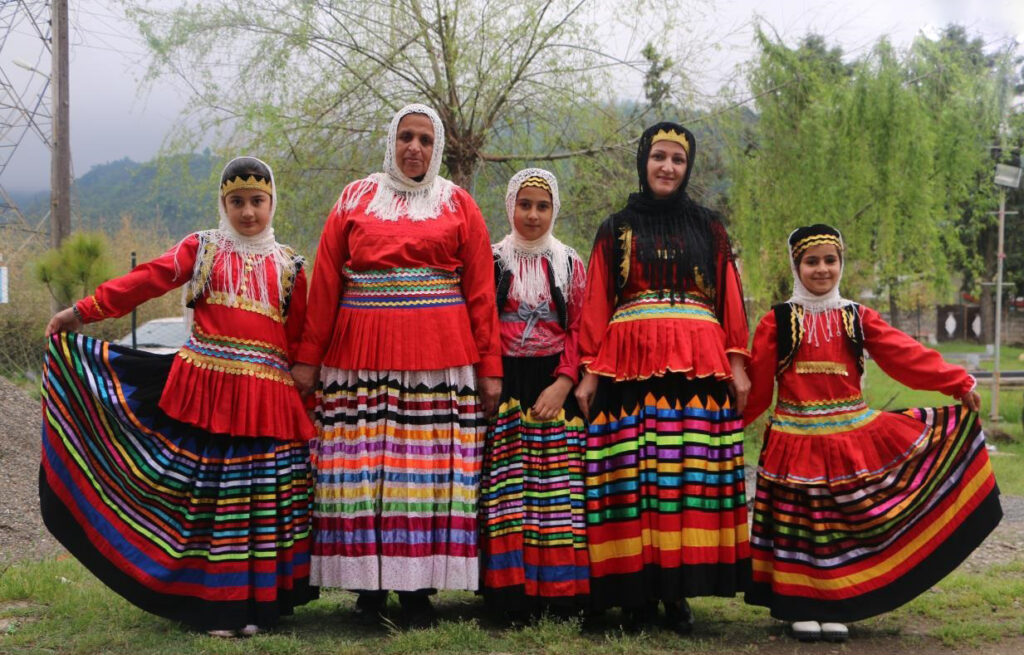
People
The Gilaks are known for their hospitality, strong community ties, and unique social structures. Demographically, the Gilaks form a significant portion of the population in Gilan province, with communities also found in neighboring regions. Understanding the demographic characteristics, family structures, social organization, and gender roles within Gilak society provides a deeper insight into their way of life and social dynamics.
Demographic Characteristics
The Gilaks are predominantly concentrated in Gilan province, which is located along the southwestern coast of the Caspian Sea. The province’s lush landscapes, including forests, mountains, and rivers, provide a scenic backdrop for Gilak settlements. Major cities with significant Gilak populations include Rasht, the provincial capital, as well as smaller towns and villages spread across the region. According to recent estimates, the population of Gilan province is over 2.5 million, with Gilaks making up a large majority of this population.
The Gilak population is characterized by a relatively high level of literacy and education. Educational institutions in Gilan, including universities and technical schools, attract students from across Iran, contributing to a well-educated populace. This emphasis on education has played a significant role in the social and economic development of the region.
Family Structure and Social Organization
Family structure is a cornerstone of Gilak society, with extended families often living in close proximity and maintaining strong bonds. The traditional family unit typically includes multiple generations, with grandparents, parents, and children living together or in nearby homes. This extended family structure fosters a sense of community and mutual support, with family members often sharing responsibilities and resources.
Respect for elders is a fundamental aspect of Gilak social organization. Elders are regarded as the custodians of cultural traditions and family history, and their advice and guidance are highly valued. Decisions affecting the family are often made collectively, with significant input from elder family members. This hierarchical structure ensures the transmission of cultural values and practices across generations.
Social gatherings and communal activities are central to Gilak life. Whether celebrating festivals, conducting agricultural work, or participating in religious ceremonies, these gatherings strengthen social bonds and reinforce the sense of community. Communal labor, known as “Boneh,” is a traditional practice where community members come together to help with tasks such as harvesting crops or building homes. This cooperative approach not only enhances productivity but also fosters solidarity and mutual assistance.
Gender Roles and Societal Norms
Traditional gender roles are observed in Gilak society, although modern influences have led to evolving perspectives on gender equality and women’s participation in various spheres of life. Historically, men have been primarily responsible for agricultural work, fishing, and other labor-intensive activities, while women have managed household chores, childcare, and food preparation. However, these roles are not rigid, and women often participate in farming and other economic activities alongside men.
In recent years, there has been a shift towards greater gender equality, with women increasingly pursuing higher education and professional careers. Educational opportunities for women have expanded, and many Gilak women now work in fields such as healthcare, education, business, and public administration. This shift is reflective of broader societal changes in Iran, where women’s rights and gender equality have become important issues.
Despite these advancements, traditional gender norms continue to influence social interactions and expectations. For example, certain cultural practices and rituals may be gender-specific, with men and women playing distinct roles. Women’s involvement in community decision-making processes has also increased, though it is often mediated through family and social networks.
Marriage and family life are central to Gilak society, with weddings being significant cultural events. Traditional Gilak weddings are elaborate affairs, often involving multiple days of celebrations, feasting, and music. Marriage customs, such as dowry negotiations and ceremonial rituals, reflect the importance of family ties and social status. While arranged marriages were more common in the past, modern Gilaks increasingly choose their partners based on mutual affection and compatibility.
Social Norms and Customs
Social norms and customs are deeply ingrained in Gilak society. For instance, hospitality is a revered value, with guests often treated with great generosity and care. When visitors arrive, it is customary to offer them tea, sweets, and a meal, reflecting the high regard for hospitality in Gilak culture. This practice reinforces social bonds and fosters a sense of community.
Respect for social hierarchies and age is another important norm. Younger individuals are expected to show deference to elders, addressing them with honorific titles and seeking their advice on important matters. This respect extends to social interactions, where politeness and decorum are highly valued.
Social gatherings, often centered around food and music, are frequent and serve to strengthen community ties. These gatherings provide opportunities for storytelling, sharing news, and reinforcing cultural traditions. Music and dance play vital roles in these social events, creating an atmosphere of joy and celebration.
Religious practices and observances also shape social norms. The majority of Gilaks adhere to Shia Islam, and religious rituals, such as prayer, fasting during Ramadan, and participation in religious festivals, are integral to daily life. Mosques and religious centers serve as important community hubs, providing spaces for worship, education, and social interaction.
Community and Mutual Support
Community and mutual support are hallmarks of Gilak society. The concept of “Mahalle,” or neighborhood, signifies a close-knit community where individuals look out for one another. This sense of community is particularly evident in rural areas, where residents often rely on collective efforts for agricultural work, infrastructure development, and crisis management.
The tradition of “Boneh” exemplifies this communal spirit. During the harvest season, neighbors and relatives come together to help each other with labor-intensive tasks such as rice planting or tea picking. This practice not only ensures the timely completion of work but also fosters a sense of unity and interdependence.
Mutual support extends to social and financial aspects as well. In times of need, such as illness or financial hardship, community members often provide assistance, whether through monetary aid, food supplies, or emotional support. This network of mutual aid reinforces social cohesion and ensures that no member of the community is left without help.
Education and Social Mobility
Education is highly valued in Gilak society, with a strong emphasis on academic achievement and intellectual development. The province of Gilan boasts a number of educational institutions, including universities, colleges, and technical schools, which attract students from across Iran. This focus on education has contributed to high literacy rates and a well-educated population.
Access to education has played a significant role in social mobility, enabling individuals to pursue careers in various professional fields. Many Gilaks have achieved prominence in areas such as medicine, law, engineering, and academia. The pursuit of higher education is often seen as a pathway to personal and familial advancement, reflecting the community’s commitment to intellectual growth and professional success.
Educational initiatives and programs aimed at preserving Gilak culture and language are also important. Efforts to incorporate local history, traditions, and language into the curriculum help foster a sense of cultural identity and pride among younger generations.
Urbanization and Modern Challenges
Urbanization has brought both opportunities and challenges to Gilak society. The growth of cities such as Rasht has led to increased economic development, improved infrastructure, and greater access to services. Urban areas offer diverse employment opportunities, attracting people from rural regions and contributing to demographic shifts.
However, urbanization has also posed challenges to traditional lifestyles and social structures. The migration from rural to urban areas can lead to the erosion of communal ties and cultural practices. Additionally, the pressure to modernize and adapt to urban living may result in the loss of traditional knowledge and skills.
Efforts to balance modernization with the preservation of cultural heritage are ongoing. Community organizations, cultural centers, and local initiatives play crucial roles in promoting Gilak traditions, arts, and social practices. These efforts aim to ensure that modernization does not come at the expense of cultural identity and community cohesion.
The Gilaks are a resilient and culturally rich people, characterized by their strong sense of community, deep-rooted traditions, and adaptability to changing circumstances. Their family structures, social organization, gender roles, and communal practices provide valuable insights into their way of life and societal dynamics. As the Gilaks navigate the challenges and opportunities of the modern world, efforts to preserve and promote their unique cultural heritage remain crucial, ensuring that their rich legacy is passed down to future generations.
Distribution
The Gilaks are primarily concentrated in the Gilan province, located along the southwestern coast of the Caspian Sea. The province’s lush landscapes, including forests, mountains, and rivers, provide a scenic backdrop for Gilak settlements. Major cities with significant Gilak populations include Rasht, the provincial capital, as well as smaller towns and villages spread across the region.
Migration patterns have seen Gilaks move to other parts of Iran, particularly to urban centers such as Tehran, in search of better economic opportunities. Despite this migration, many maintain strong ties to their homeland, often returning for significant cultural and familial events.
Diaspora communities of Gilaks can also be found abroad, particularly in countries with significant Iranian immigrant populations. These communities often strive to preserve their cultural heritage while integrating into their new environments.
Language
The Gilaki language, a Northwestern Iranian language, is a defining characteristic of the Gilak identity. It shares similarities with Mazandarani and other Caspian languages, reflecting the historical interactions and commonalities among the peoples of this region.
Gilaki is rich in dialectical variation, with different regions exhibiting distinct linguistic features. These dialects can be broadly categorized into Western Gilaki, spoken in areas like Rasht, and Eastern Gilaki, spoken in regions like Lahijan. The language is characterized by its unique phonetic and grammatical features, setting it apart from Persian, the national language of Iran.
Efforts to preserve and promote the Gilaki language are ongoing, with local media, educational programs, and cultural initiatives playing crucial roles. However, the dominance of Persian in formal education and media poses challenges to the preservation of Gilaki, particularly among younger generations.
Genetics and Haplogroups
Genetic studies on the Gilak people provide insights into their ancestry and connections to other ethnic groups. Research indicates that the Gilaks, like other Caspian populations, exhibit a unique genetic profile that distinguishes them from other Iranian groups.
One notable finding is the prevalence of certain haplogroups among the Gilaks. Haplogroup J2, common in the Caucasus and Mediterranean regions, is frequently observed, suggesting historical migrations and interactions. Additionally, haplogroup G, associated with populations in the Caucasus and parts of Europe, is also present among the Gilaks.
These genetic markers highlight the diverse ancestral contributions to the Gilak gene pool, reflecting a history of migrations, trade, and cultural exchanges. Understanding these genetic patterns provides a deeper appreciation of the Gilaks’ place within the broader human story.
Assimilated Groups into the Gilak People
Throughout history, the Gilaks have assimilated various groups, contributing to their rich cultural mosaic. One notable example is the integration of the Caucasian Albanians, who migrated to the region during antiquity. These groups brought their own customs and traditions, which blended with those of the native Gilaks.
Another significant influence came from the Mazandaranis, their neighbors to the east. Historical interactions, including intermarriage and trade, led to a blending of cultural practices and linguistic features. Today, the similarities between Gilaki and Mazandarani languages and customs are testament to this historical assimilation.
These assimilation processes have enriched Gilak culture, adding layers of diversity and complexity to their identity. Despite these influences, the Gilaks have maintained a distinct cultural and ethnic identity, characterized by their unique language, traditions, and social practices.
The Gilaks, with their rich history, vibrant culture, and unique genetic heritage, are a vital component of Iran’s diverse ethnic landscape. Their traditions, economic practices, and social structures offer valuable insights into the broader dynamics of Iranian society. Understanding the Gilaks not only enhances our appreciation of Iran’s cultural diversity but also underscores the importance of preserving and promoting the unique identities of its various ethnic groups.
As the Gilaks navigate the challenges of modernization and globalization, efforts to preserve their language, traditions, and cultural heritage remain crucial. By celebrating and studying the Gilaks, we contribute to the broader effort of safeguarding the cultural richness of our world for future generations.


